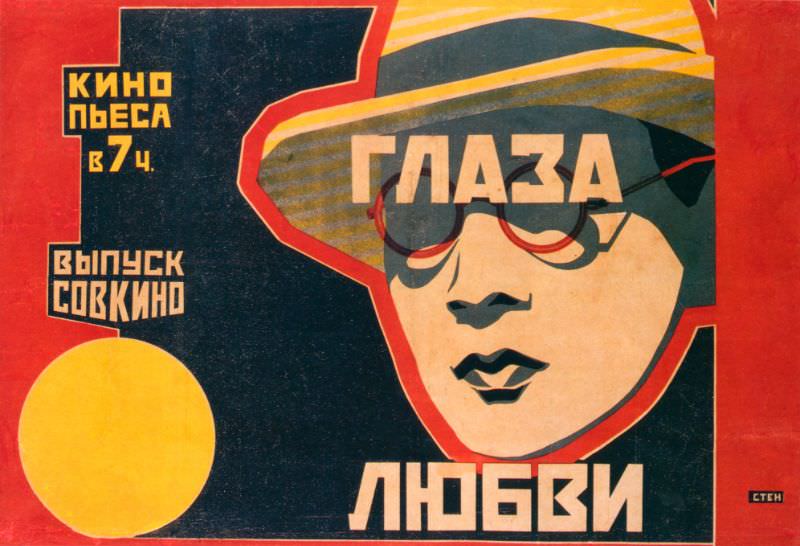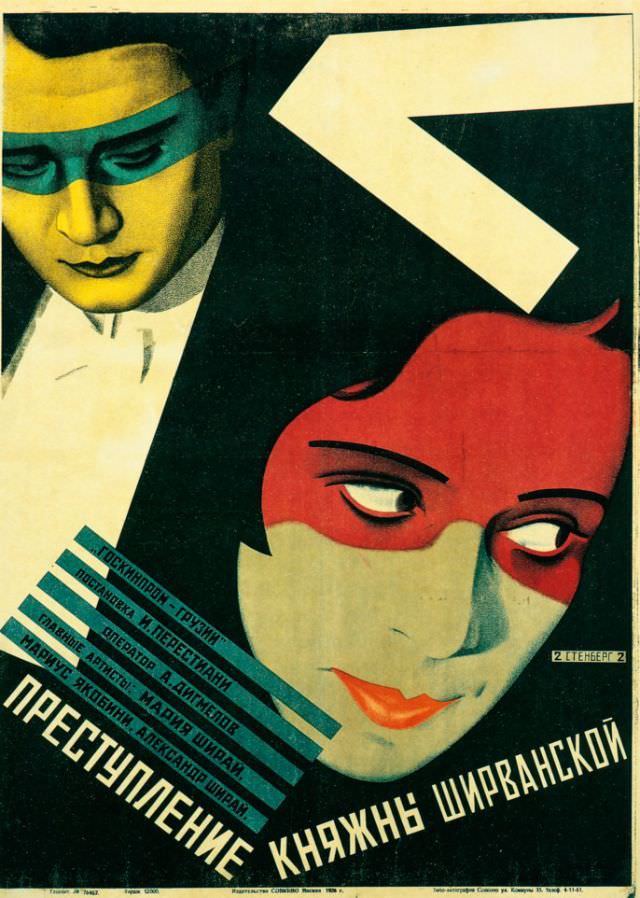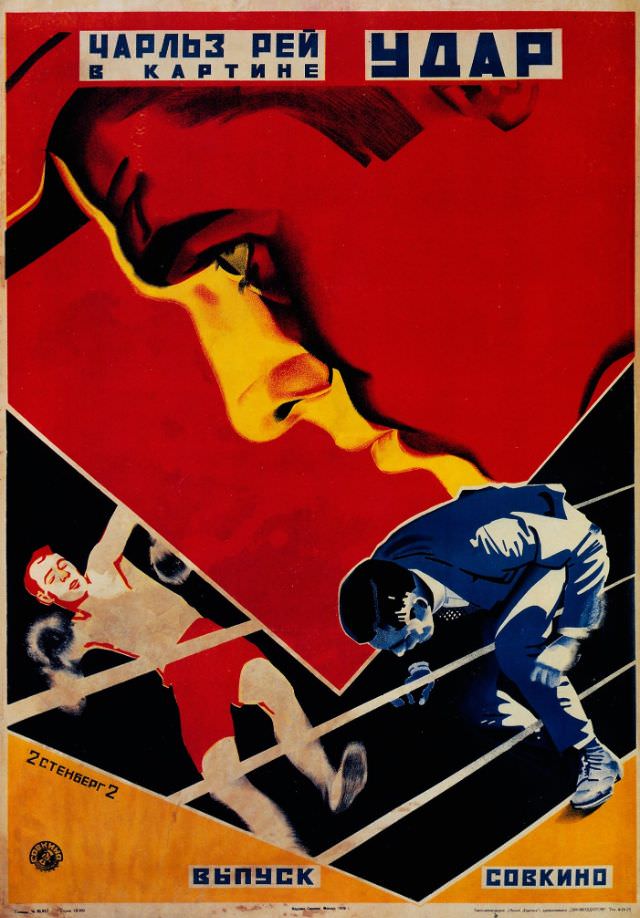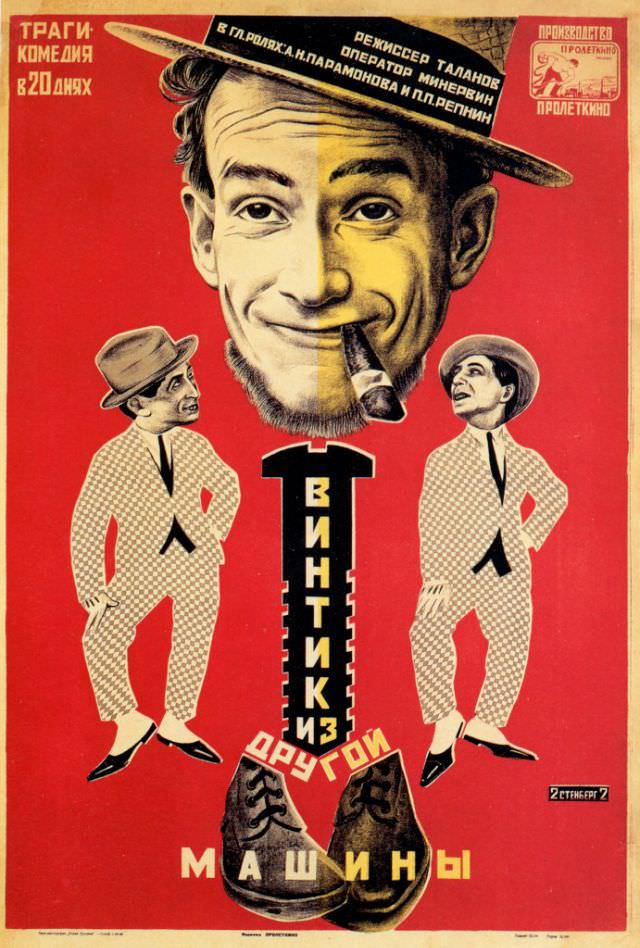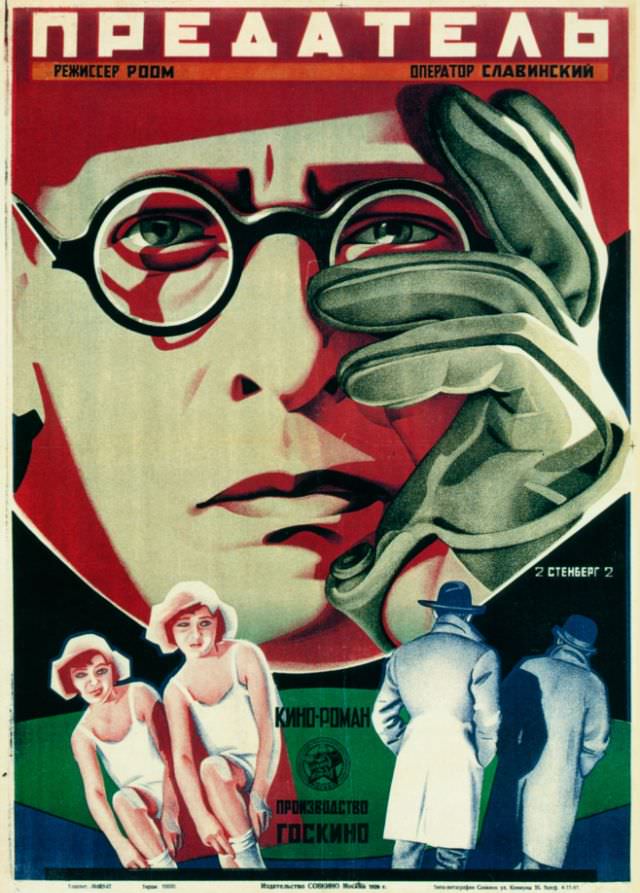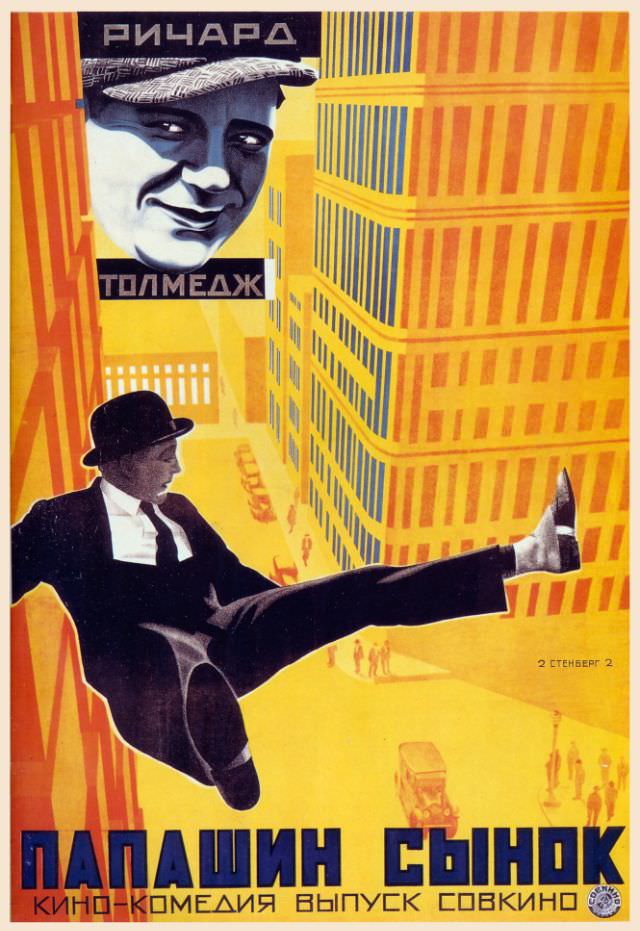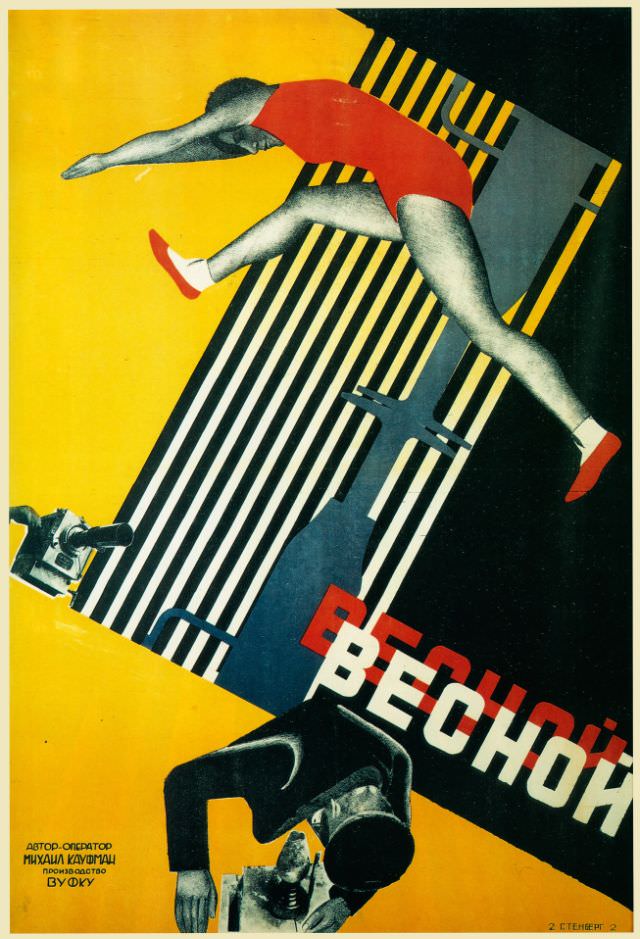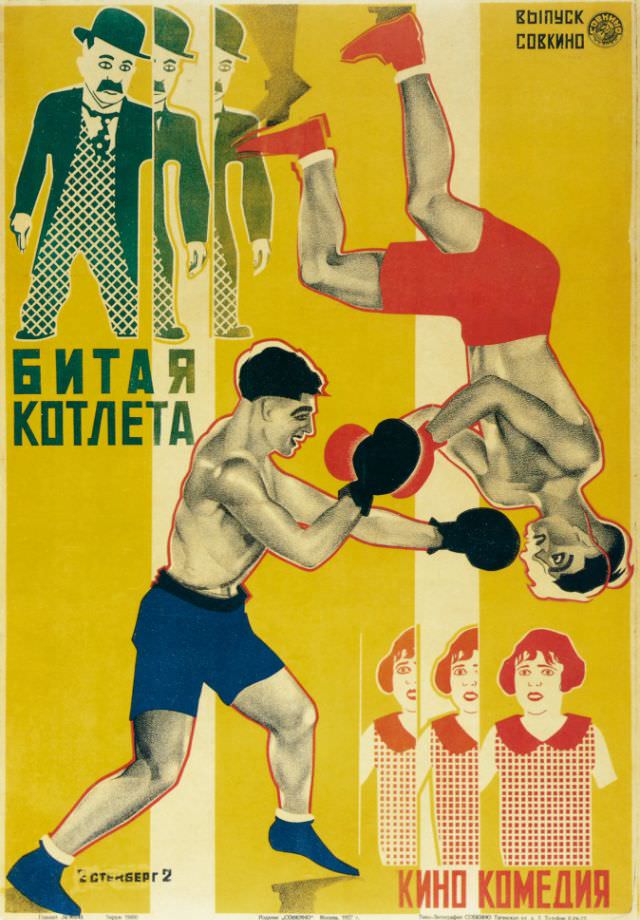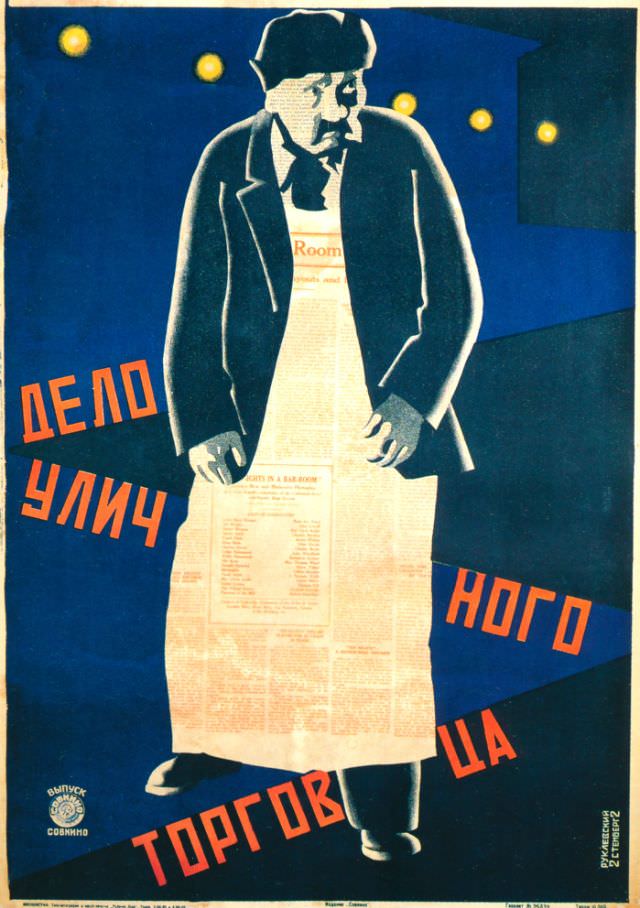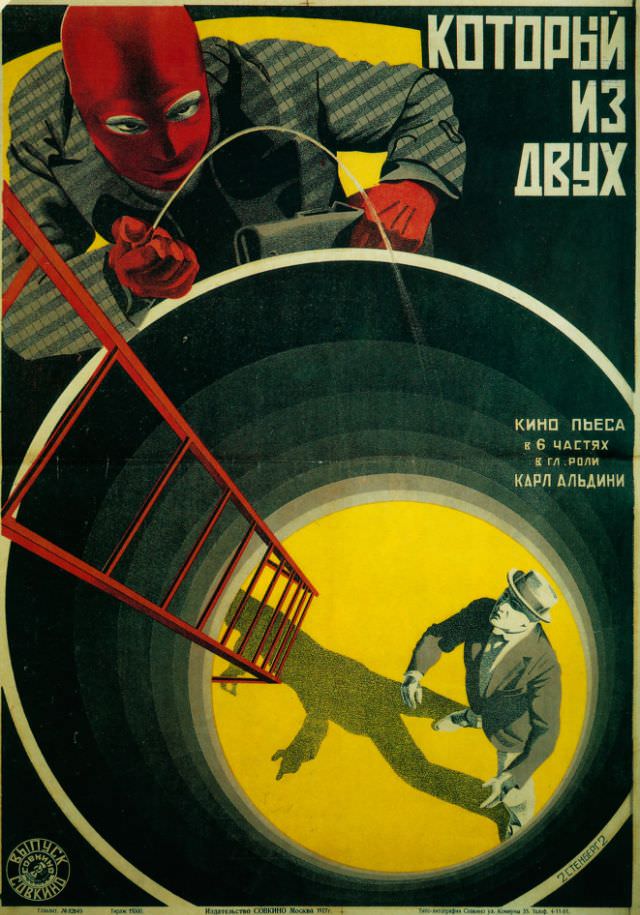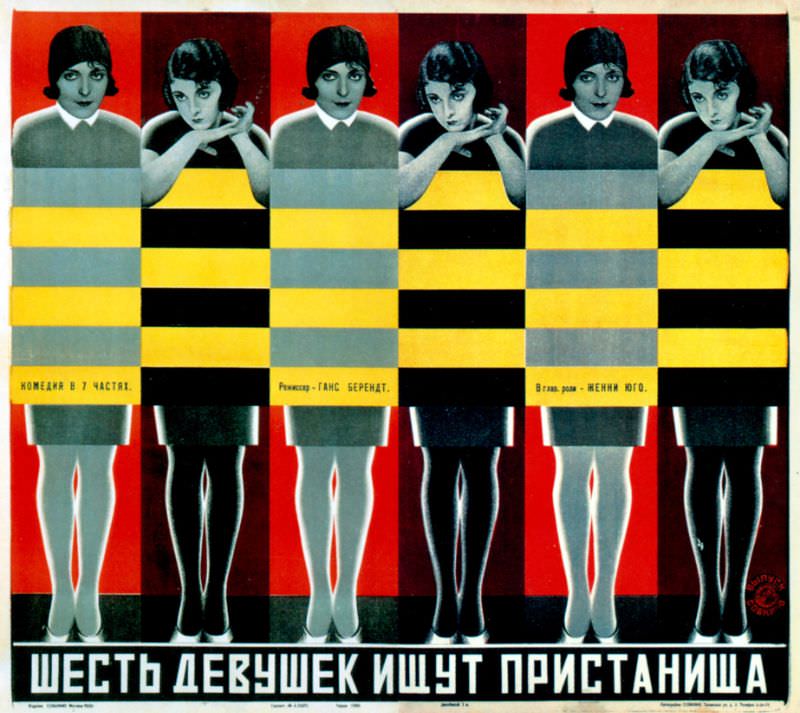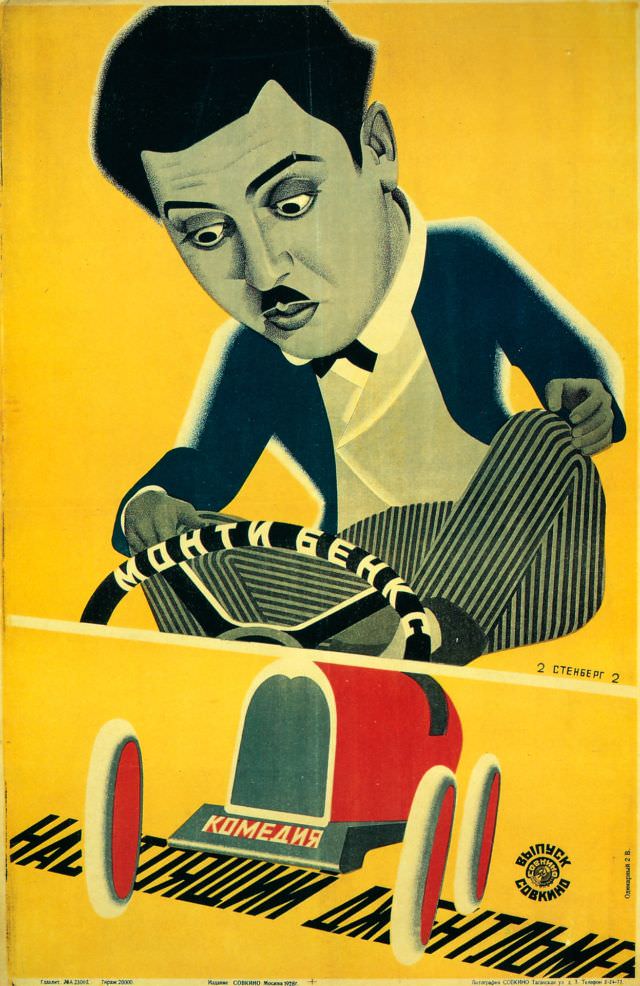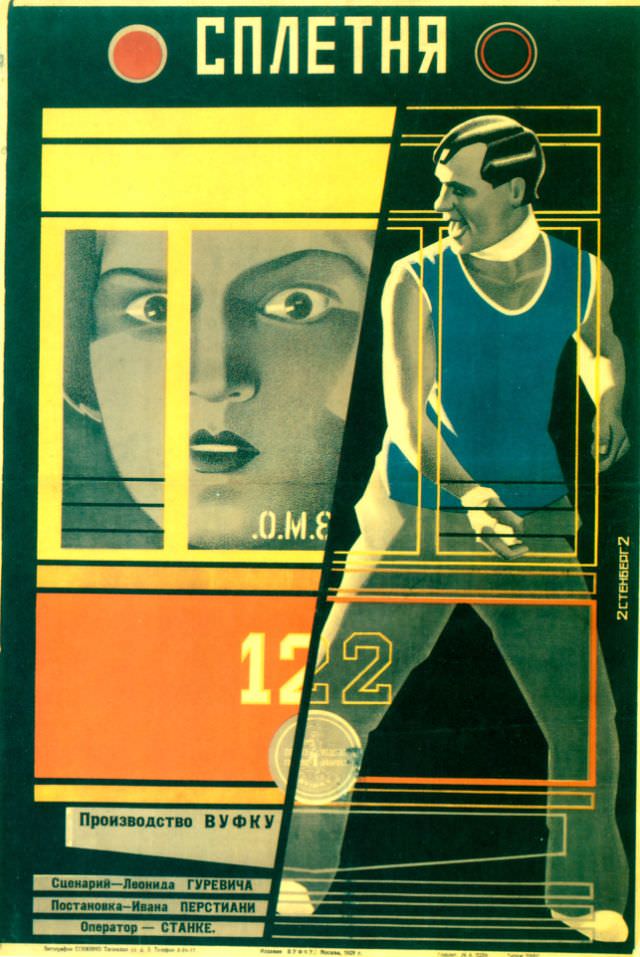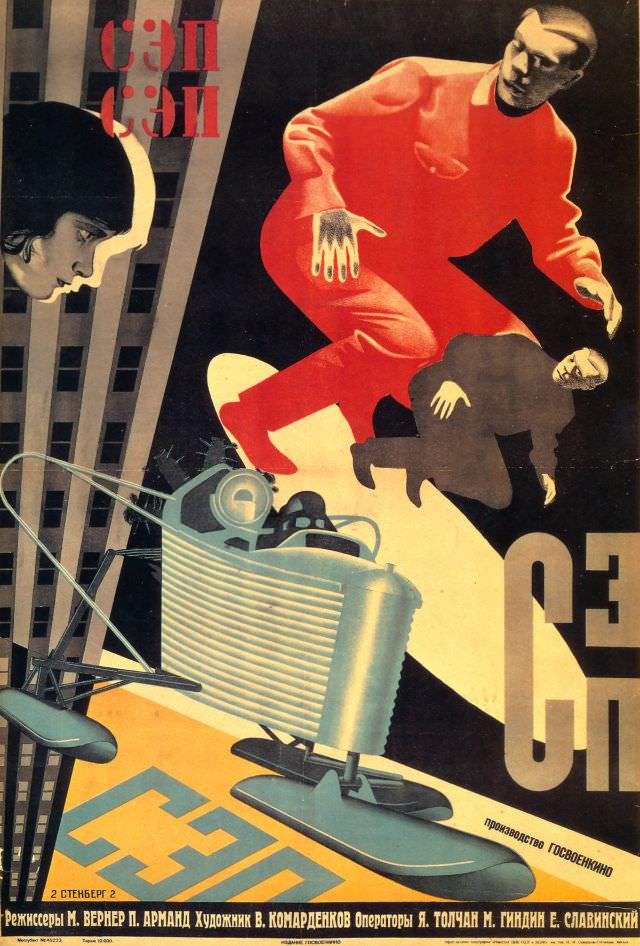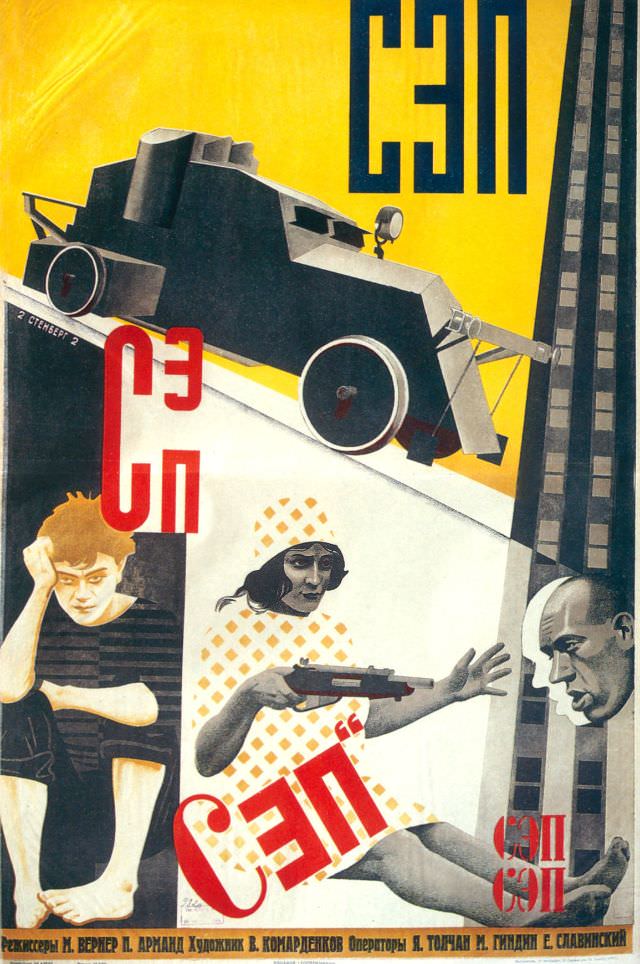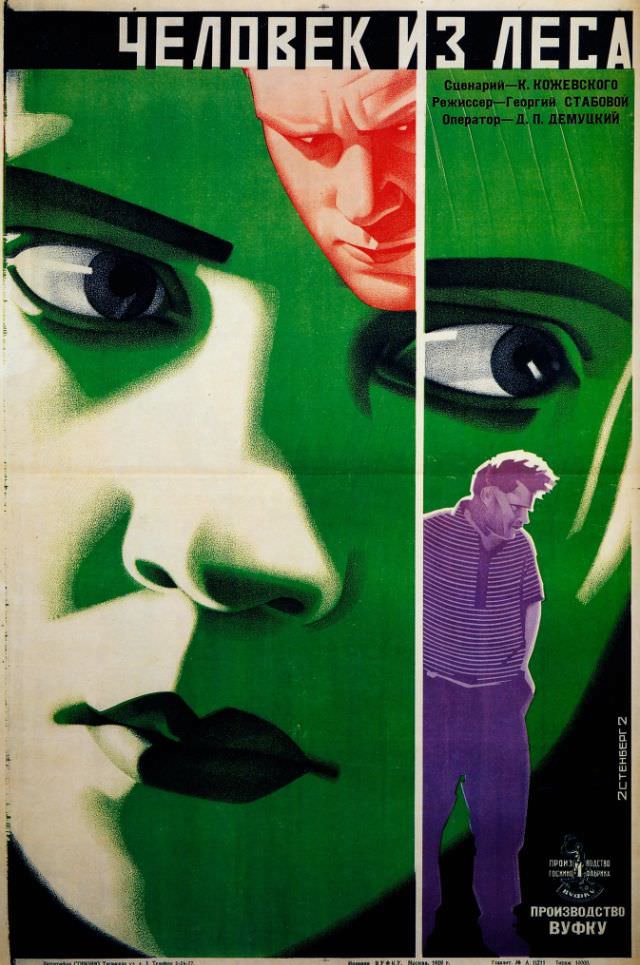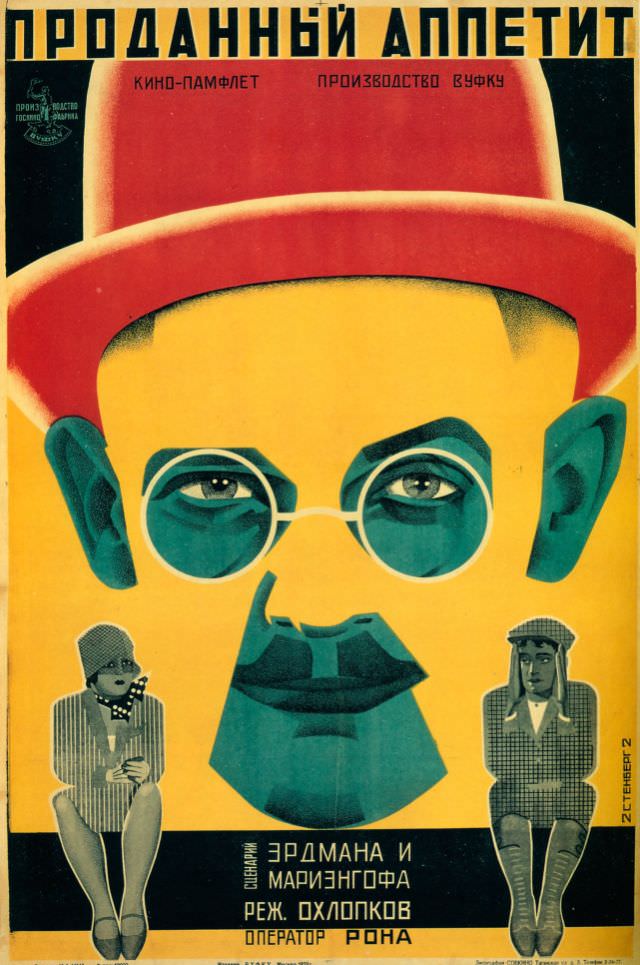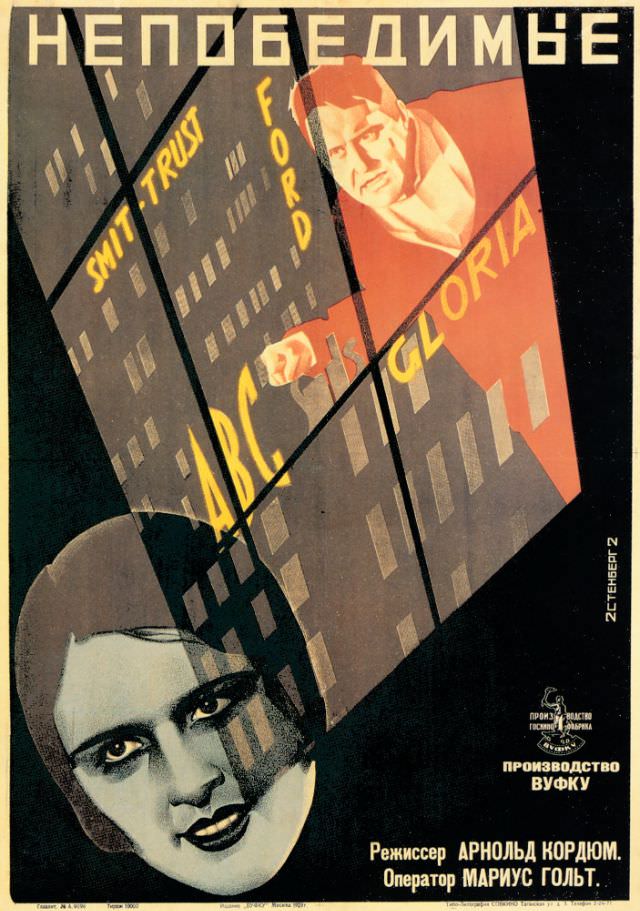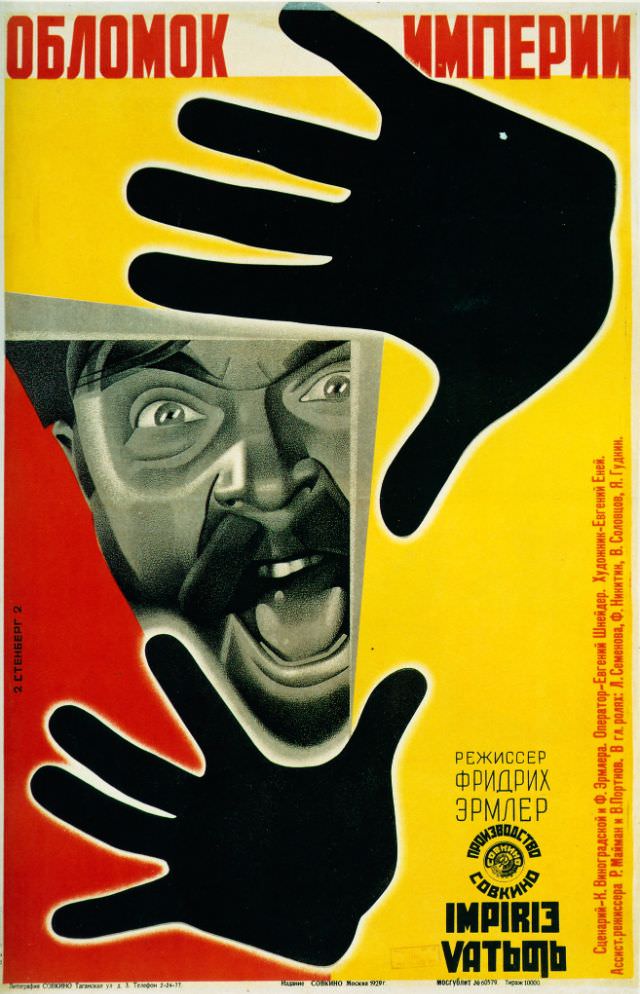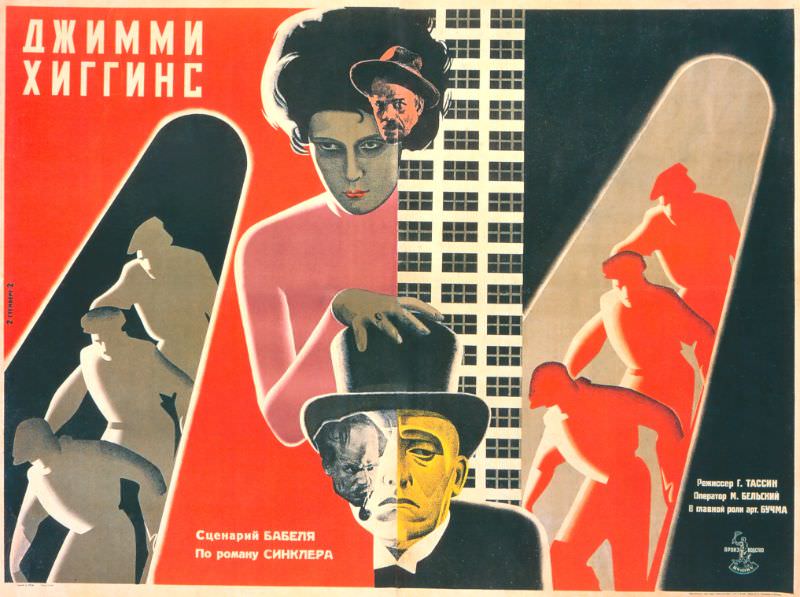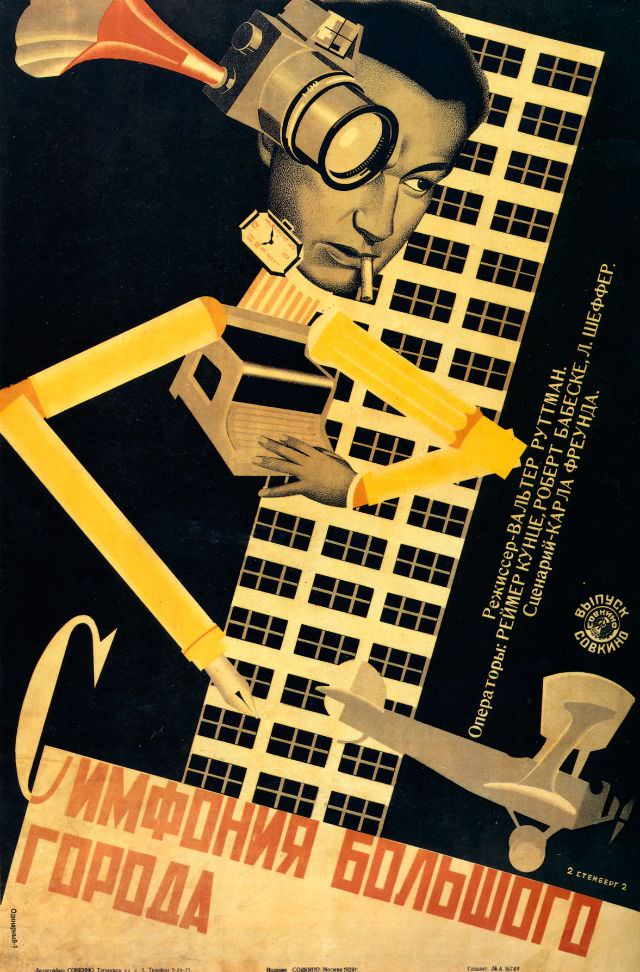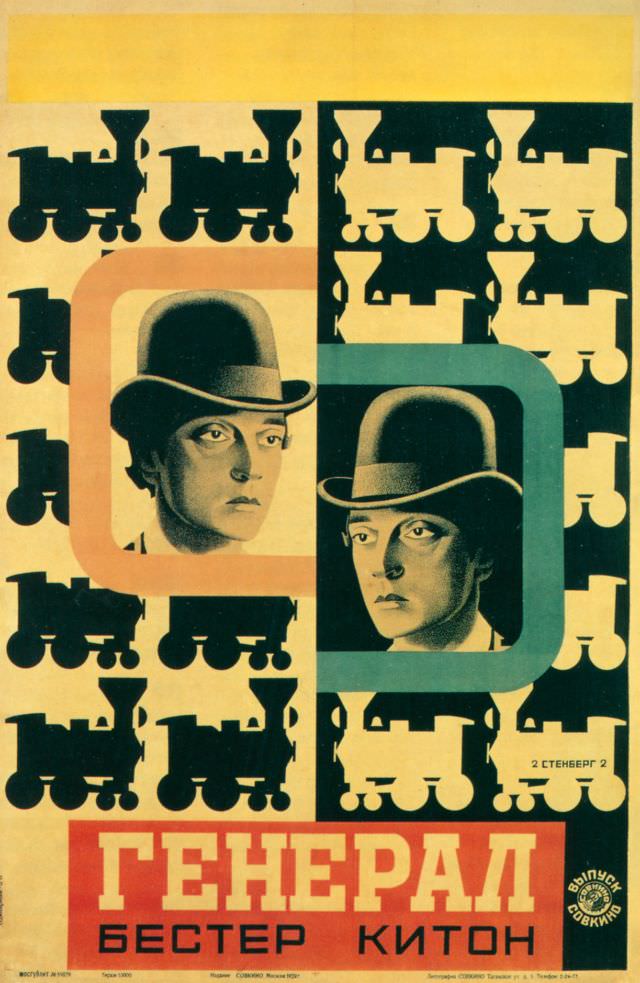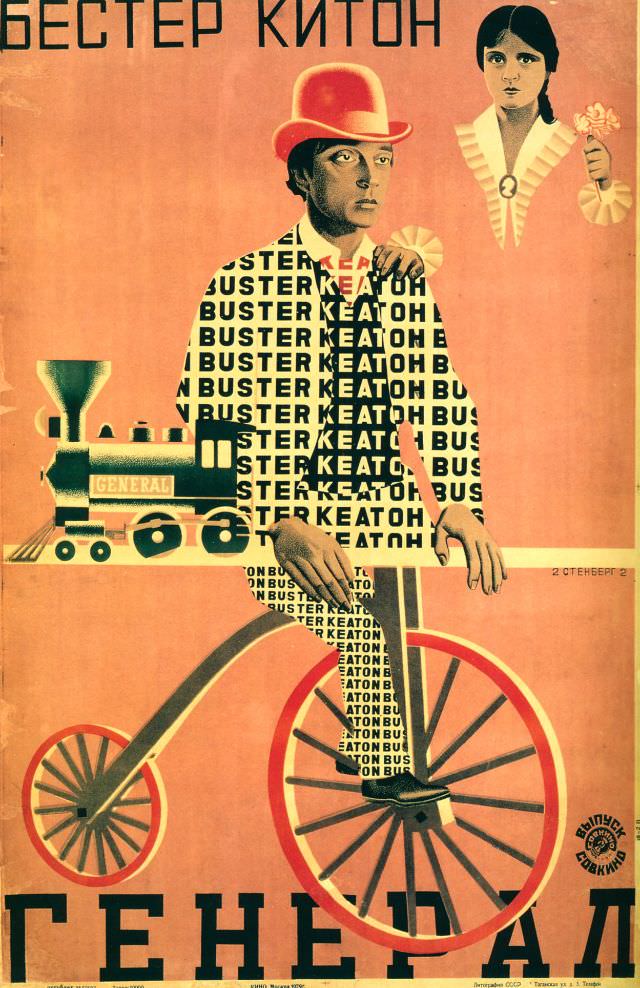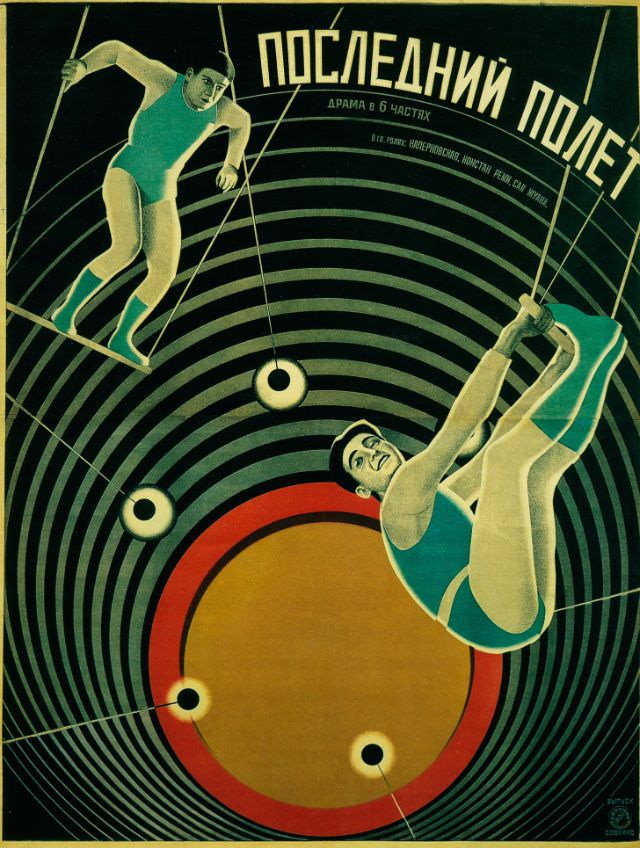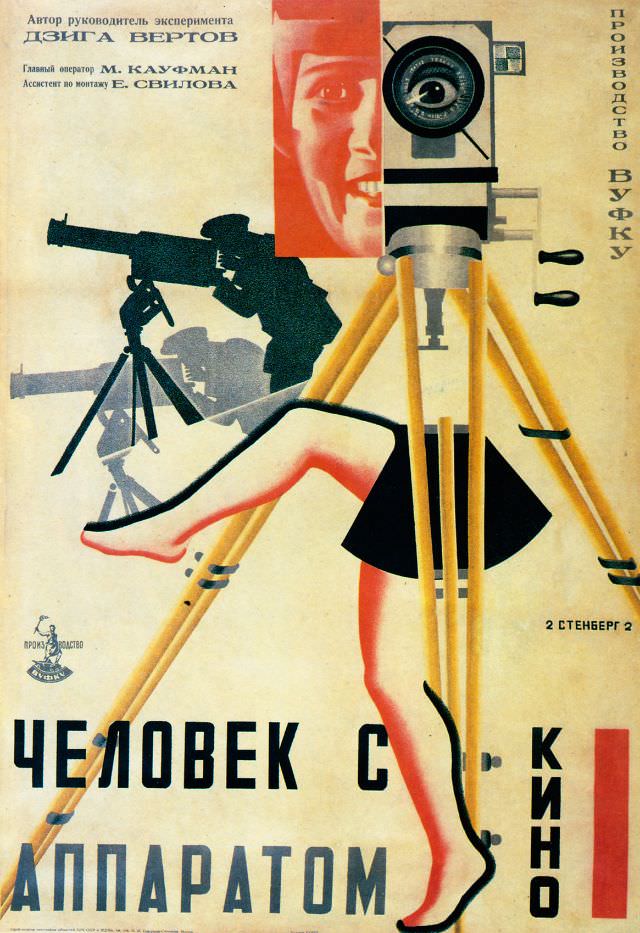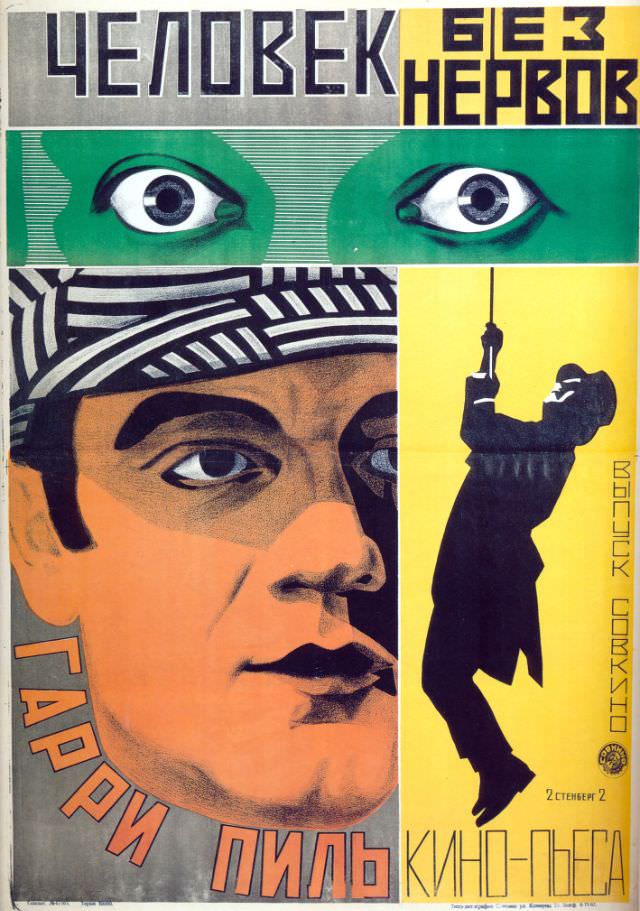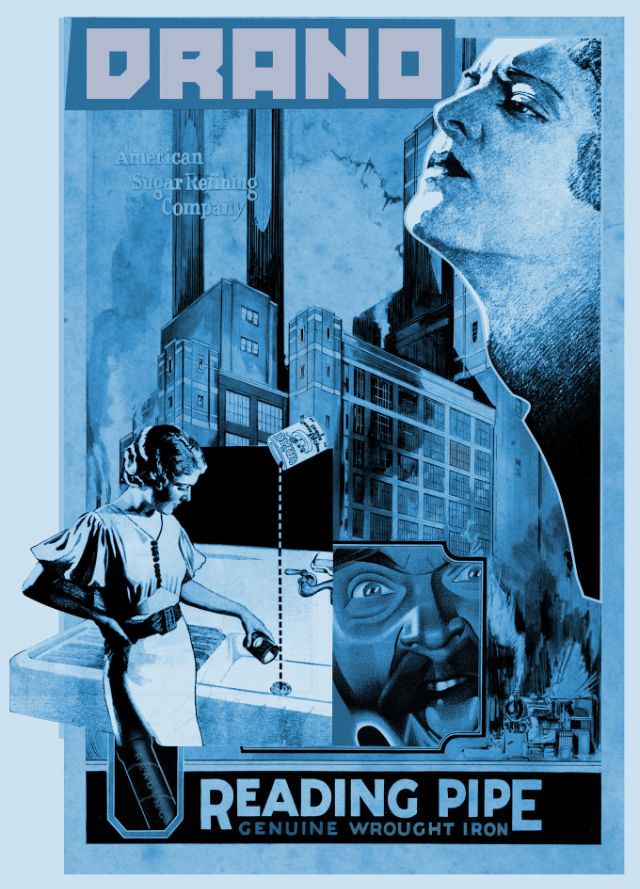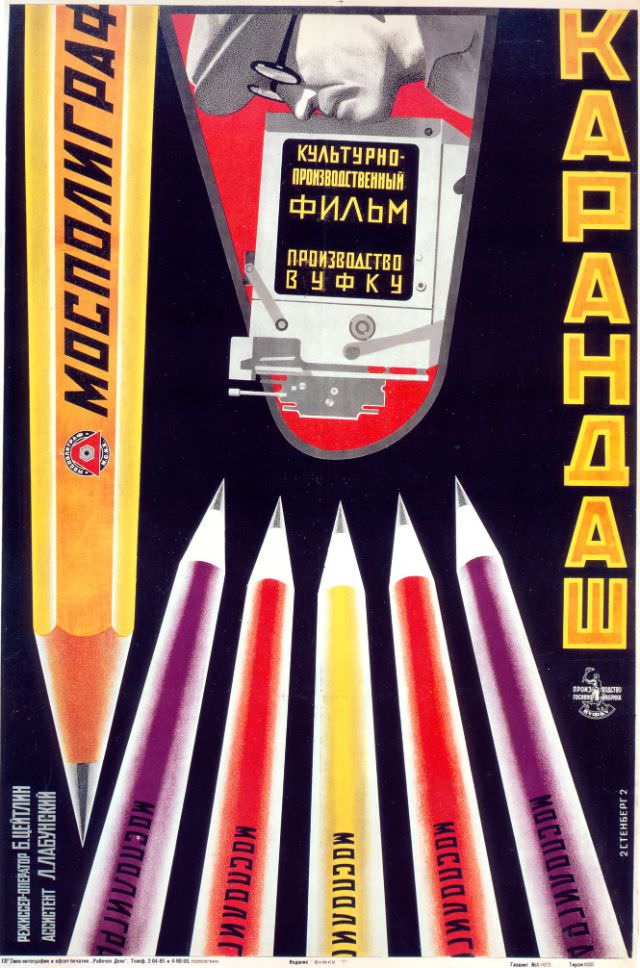Vladimir and Georgii Stenberg were true pioneers of their time. Best known for designing film posters for the likes of Sergei Eisenstein and Dziga Vertov, these creative geniuses worked in a range of media, from sculpture to theater design, architecture, and drafting. They even dabbled in fashion and industrial design!
But what really set the Stenberg Brothers apart was their unique approach to film poster design. Their work was a far cry from the traditional, narrative-style posters of the time. Instead, they opted for an inventive, eye-catching style that was designed to stop busy passersby in their tracks.
“We deal with the material in a free manner… disregarding actual proportions… turning figures upside-down; in short, we employ everything that can make a busy passerby stop in their tracks,” Vladimir once said. And true to their word, the Stenberg Brothers’ posters were nothing short of revolutionary.
Their posters were a brilliant blend of constructivism and productivism styles, often using stills from the films they were promoting. They employed creative cropping, distorted perspectives, and an exaggerated scale to create a sense of movement and dynamism. Their innovative use of color and typography further enhanced the visual impact of their designs, adding to their appeal.
The Stenberg Brothers’ posters were more than just promotional material for films – they were a unique form of art in their own right. They brought elements of Dada photomontage to their designs, using collage or assemblage to create non-narrative visual masterpieces.
Looking back at the 1920s through the lens of the Stenberg Brothers’ movie posters, we see a time of creative experimentation and boundary-pushing in the world of graphic design. The Stenberg Brothers were not just creating posters – they were redefining what a film poster could be.


